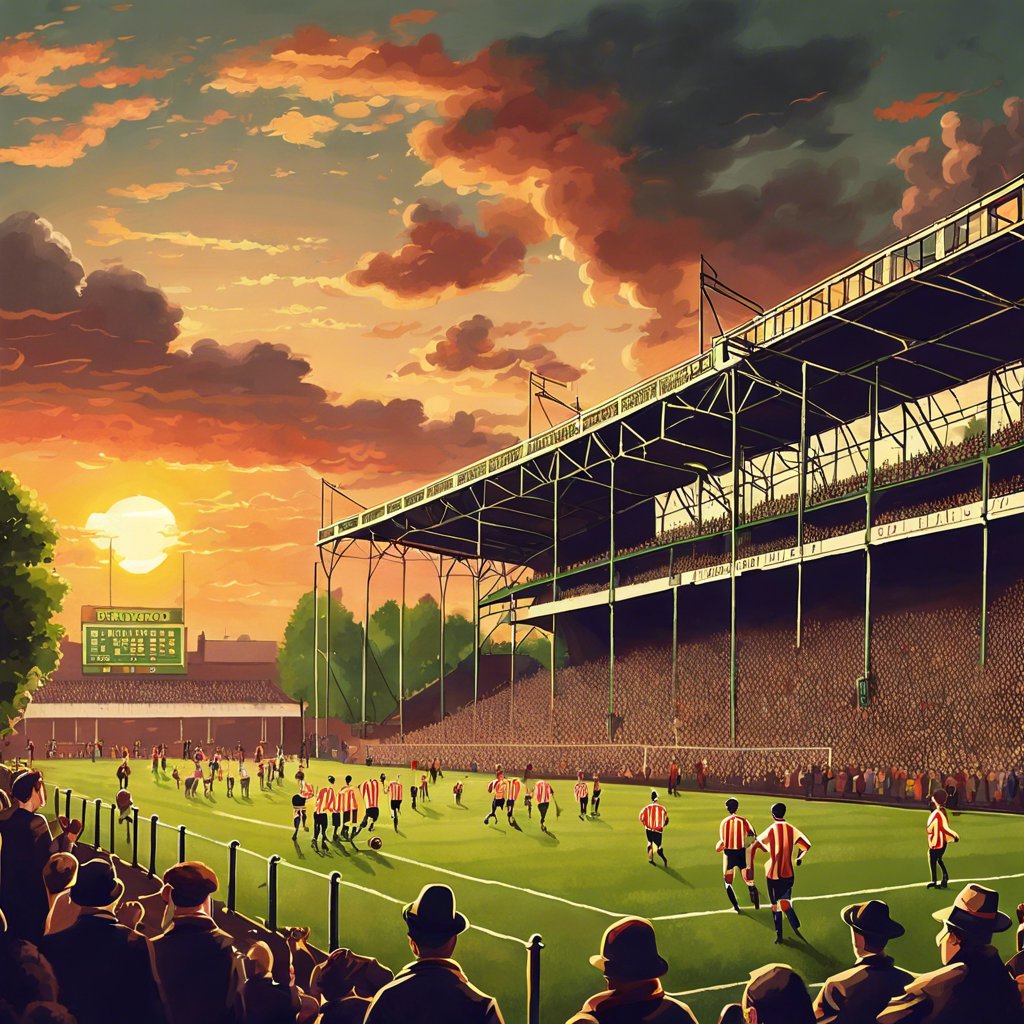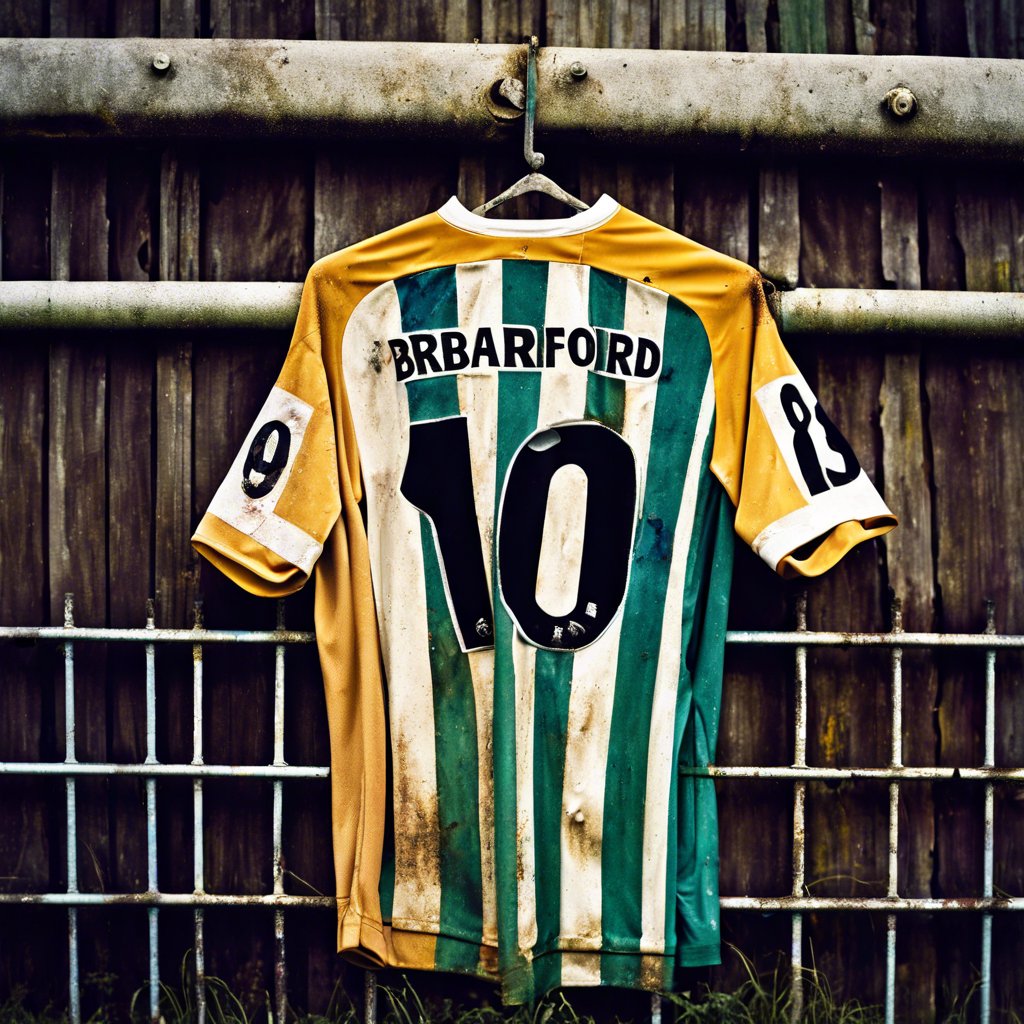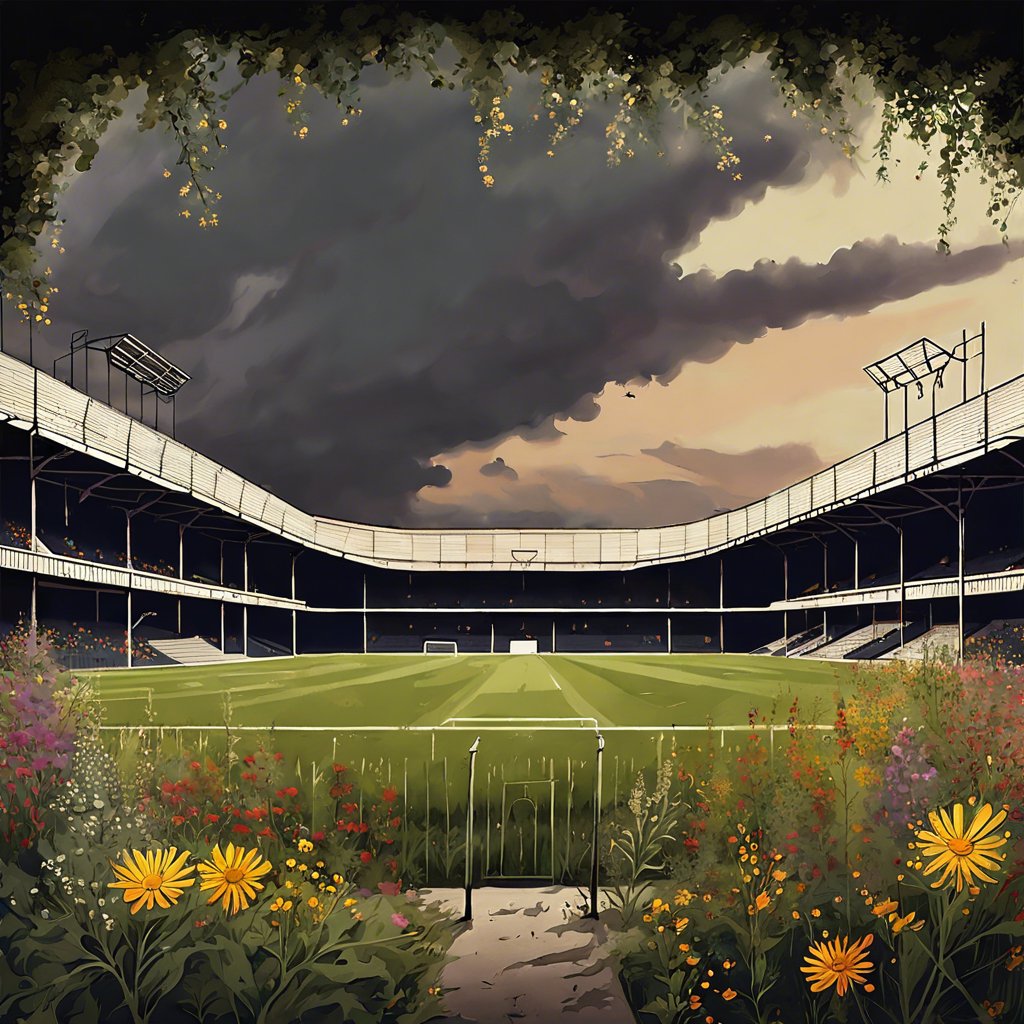The Forgotten Grounds: A Journey Through Bradford Park Avenue
Once a cherished landmark in the towns and cities across the nation, numerous Football League grounds have faded into obscurity over the past three decades. Each closure has taken with it a treasure trove of memories cherished by generations of supporters. But what has become of these hallowed grounds? The Athletic embarked on a journey across the country to uncover their stories, revealing a landscape dotted with housing estates, retail parks, and even the occasional hospital.
In this four-part series, which will unfold every Tuesday in August, we begin with perhaps the most poignant tale of all: that of Bradford Park Avenue. Home to a League club for an impressive 62 years and a venue for county cricket for over a century, Park Avenue now stands neglected and forlorn, with one of its rare visitors in the last decade being an archaeological dig.
As one gazes up at a row of turnstiles that once welcomed thousands to a vibrant football ground—where England even played an international fixture—it feels as though time has conspired to stand still. High on the wall, the faded inscription ‘5/-’ recalls an admission price of five shillings in days gone by. Just around the corner, a few bricked-up entrances stand silent, accompanied by a colossal, rusting iron gate, its spikes a futile deterrent against those seeking to sneak in.
Further back, a gents’ toilet block remains visible amidst the decay, situated just behind a banking where supporters stood more than half a century ago. A stroll through the site reveals two heavily overgrown terraces and a crumbling perimeter wall gazing out over the uneven remnants of a pitch once graced by legends like Stanley Matthews and Len Shackleton. Welcome to Park Avenue, Bradford—the once-vibrant home of a former Football League club that now lies in ghostly preservation by the relentless embrace of nature.
In a time when demolition crews typically descend upon iconic sporting venues like Highbury, Roker Park, and White Hart Lane the moment the last match concludes, this once-hallowed sporting ground is a nostalgic relic.
A Legacy of Sport
Not only has the cricket ground, where Yorkshire played until 1996, endured—albeit in a state of semi-dereliction—but enough remnants of the adjacent football ground linger to evoke fond memories among older fans. The two sports shared a magnificent main stand, designed by renowned architect Archibald Leitch.
Park Avenue was traditionally viewed as the superior venue compared to Valley Parade—the home of Bradford City, which once graced the Premier League but now competes in League Two. With a capacity of 37,000 and covered seating for 14,000, it was a footballing fortress. The nearby railway station and tram spur, now replaced by the ornate Grand Mosque across Horton Park Avenue, allowed thousands of fans to be swiftly transported to and from the ground.
Adding to its charm was the corner pavilion, affectionately dubbed the ‘Dolls’ House’ by visitors. This quaint two-storey edifice played a vital role, housing the football club’s dressing rooms and committee room, with officials enjoying a prime view of matches from the upstairs balcony. However, even this charm could not save the club as its fortunes plummeted in the late 1960s.
In 1970, Bradford Park Avenue was voted out of the League, struggling on in the Northern Premier League for another four years before succumbing to debts of £57,652 (equivalent to approximately $73,580 today) and folding. By that time, the football ground had been sold to a property developer, and Avenue played its final season across the city at Valley Parade.
A Withering Heritage
A restrictive covenant dictated that the land could only be used for sports and recreational activities, leaving the football ground to decay, even after the local council purchased the site with ambitious plans for a sports complex. By 1980, Leitch’s ornate main stand had deteriorated to such an extent that it had to be demolished. This event triggered a wave of nostalgia, as hundreds of fans flocked to the old ground for a final glimpse.
A pensioner was even assisted onto the weed-choked Canterbury Avenue End, where he leaned against a rusting crash barrier, lost in a silent reverie over what must have felt like an overgrown grave. Tim Clapham, a devoted supporter since 1963 and now the club historian, was among those making this bittersweet pilgrimage before the wrecking ball claimed not only the 4,000-seat main stand with its distinctive three gables but also the Dolls House and the Horton Park End roof.
“Only the half-time scoreboard remained standing, with even the old social club sold to a local pig farmer,” Clapham recalls. “It was such a sad time. Many came hoping to take a memento, something to remember the ground by. Some were keen on the ‘BFC’ letters etched on the middle gable of the stand, while others fancied the two coats of arms at either end. However, when they were taken down, these items turned out to be much larger than they appeared. You would have needed a truck to carry them away!”
As Bradford mourned for the second time the loss of a venue that had hosted not only an England versus Ireland international in 1909 but also the record for the fastest-ever Football League goal (four seconds, scored by Jim Fryatt against Tranmere Rovers in 1964), cricket managed to endure.
The Final Chapter
That survival was short-lived, however, as in 1996 Yorkshire County Cricket Club opted to centralize its efforts at Headingley, playing only a handful of games each season in Scarborough. Other venues, such as Middlesbrough, Harrogate, and Hull, also lost their status as out-grounds, with part of the MKM Stadium now occupying the old Circle cricket ground, which served as a dual home for Hull City and rugby league club Hull FC.
By the time of its last County Championship match against Leicestershire in 1996, Park Avenue had become a shell of its former self. What anyone who remembers Park Avenue in its glory days would make of the site in 2024 is anyone’s guess. In recent years, the cricket square has been restored to first-class standards, allowing Yorkshire’s second XI to return for occasional matches. However, the surroundings have fallen into a state of neglect.
Where the grand pavilion once stood until the late 1980s is now a wasteland, and the area where cricketers like Fred Trueman and Ray Illingworth plotted their strategies against visiting batsmen is now overtaken by ten-foot-high bushes. Time is a relentless adversary when sporting arenas are left to deteriorate.
In front of the remnants, a few dilapidated rows of seats remain, many vandalized and all engaged in a battle against the encroaching weeds. The narrative of decay continues throughout the site, with fenced-off sections of crumbling terraces interspersed with patches of wild vegetation. The only highlight is a mural of England spin bowler and local hero Adil Rashid, painted to commemorate the launch of the Hundred competition in 2021. Even this tribute is fading, adding to the rundown atmosphere of what was once considered the jewel of Yorkshire’s cricketing heritage.
The Echoes of the Past
The remnants of the old football ground are no less disheartening, even allowing for the archaeological dig in 2015 that uncovered a fascinating array of artifacts. This treasure trove, documented by the Breaking Ground art project, included boot studs, coins, marbles, goal hooks, and even a nappy pin. The latter, it turned out, was linked to an incident where goalkeeper Chick Farr’s shorts snapped during a match, necessitating an impromptu repair by the trainer. Farr never lived down the embarrassment, often finding himself showered with pins while guarding the net.
Hope for Bradford’s return to its spiritual home diminished when a cricket school (now a gym) was built on half of the old football pitch in 1988. A new Park Avenue club was formed that same year, settling at Horsfall Stadium—a couple of miles away from the original ground—where they have remained for nearly three decades.
On the cricketing front, ambitious plans emerged a few years ago to revive Yorkshire’s presence at their old stomping ground through a £5.5 million renovation project. The first phase included a state-of-the-art changing facility, outdoor nets, and a score-hut that opened in 2017, with England and Yorkshire players Joe Root, Jonny Bairstow, and Rashid participating in the ribbon-cutting ceremony. The outdoor nets, situated between what was the halfway line and roughly the penalty area of the old pitch, were converted into an indoor facility last year.
However, the rest of the original scheme—a community pavilion with changing rooms intended to be built adjacent to the original structure, a restaurant catering for 250 diners, and 1,000 spectator seats—never materialized. Consequently, the anticipated return of county cricket to Bradford remained unrealized, with York joining Leeds and Scarborough on Yorkshire’s list of home grounds.
This may well be the final nail in the coffin for any hopes of reviving professional sport in this corner of Bradford. Now, all that lingers are the spectral echoes of a glorious past, alongside the deserted turnstiles and terraces that, for the past fifty years, have been the sole domain of worms and weeds.
(Top photo: Richard Sutcliffe, Tim Clapham)















